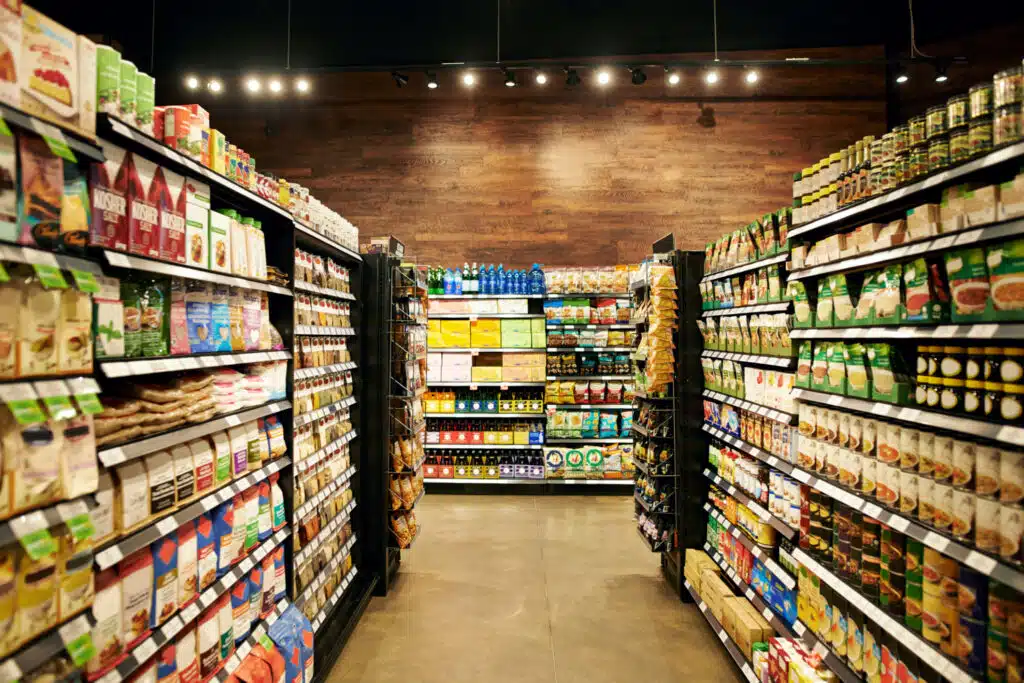The Art of Food Labelling: Meeting Regulatory Requirements for Your Products
Getting your food labelling right is more than just ticking boxes—it’s about making genuine connections. Beyond the eye-catching designs, every label should tell a story of all the essential details that consumers rely on. It’s an art form that balances aesthetic appeal with the meticulousness of meeting food labelling regulations.
For small food manufacturers, understanding this complex landscape can seem overwhelming. So here is a comprehensive blog to guide you through the maze of compliance with precision and professionalism.
Understanding the Regulatory Framework
The foundation of effective food labelling lies in a thorough understanding of the regulatory framework that governs it. In Australia, it is the Food Standards Australia and New Zealand (FSANZ) that develops the food standards which are embodied in the Australia New Zealand Food Standards Code. The standards are, however, enforced by the States and Territories in Australia. One important regulation all manufacturers have to understand and comply with, according to an article by FoodStandards, is that allergen information should be in a specific format and location on food labels, and must be declared using simple, plain English terms in bold font. These regulations are put in place to inform and protect the consumers. The more consumers know about a product, the more they are likely to buy it. So, manufacturers have to remember that it is through being well-informed and being transparent that they can promote trust and confidence in their products.
“What goes on the label (and what does not) is a key part of building consumer trust.” – Chris Elliott, Director of the Institute for Global Food Security
Navigating Challenges in Labelling
One of the most significant challenges small manufacturers face is the dynamic nature of food labelling regulations. According to an article by HealthyWA, FSANZ lists the following information as mandatory in a food label: a description of the food, ingredients, nutritional information, best before or use-by dates, storage and preparation directions, and warnings about particular ingredients and also the advisory statements for those ingredients known to cause allergic reactions.
However, these regulations evolve in response to new scientific discoveries, changes in consumer behaviour, and public health concerns. It is essential for manufacturers to stay abreast of these changes to ensure their products remain compliant and competitive in the market.
“What people eat is the result of generations upon generations of essentially dietary trial and error to figure out what keeps people healthy and happy.” – Michael Pollan, a Journalist, Professor, and Author of a new book called In Defense of Food
Moreover, with the rise of health-conscious consumers, there has been an increased demand for labels of products going beyond basic compliance, incorporating clean labels, organic certifications, and sustainability claims. These trends offer opportunities for differentiation but also add layers of complexity to the labelling process.
Practical Tips for Meeting Regulatory Requirements
Stay Informed
Regularly review regulatory updates from relevant authorities to ensure ongoing compliance.
Understand Your Product
Deep knowledge of your product’s ingredients (talking to your suppliers helps here), the production process, and storage requirements in order to comply with food safety requirements and maintaining quality of the food to the end of shelf life, is essential for accurate labelling.
Consult with Experts
Engage with professionals like Food Labelling Experts to navigate complex regulations and adapt to changes efficiently.
Educate Your Team
Ensure that your team is knowledgeable about labelling standards and the importance of compliance.
Systemise Your Food Labelling
Create a system to ensure that you do not miss any mandatory labelling requirement on your food label. Put in place checks to make sure that the information included is correct and not misleading to consumers. Make sure that you have a quality control step in the packaging process to ensure that you put the correct label on the correct product. Many product recalls are due to incorrect labelling, especially for allergens. A label number for each level of labelling helps identify the correct label. Putting the correct label on the packaged product is the same as using the correct raw material during the manufacture of the product. Make sure that you have a sign-off happening for the match up of the label with the product. If you change what is on the label and print new ones, make sure you dispose of the old labels so that they cannot be used incorrectly – update your specifications to make sure that the correct label is matched to the product.
The art of food labelling is a critical aspect of the food manufacturing process, intertwining regulatory compliance with marketing and consumer education. For small manufacturers, mastering this art is key to ensuring not only the legality of their products but also their appeal to consumers. Partnering with specialists like Food Labelling Experts can provide the guidance and expertise necessary to navigate the intricacies of food labelling regulations. Get in touch with us to have your ultimate online training tool for food labelling!
FAQs
What are the essential elements that must be included on a food label?
- Essential elements on a food label include the business name and address, a description of the food, ingredients, nutritional information, best before or use-by dates, storage and preparation directions, information about some ingredients including those specified as causing allergic reactions, country of origin, and net content. Compliance with specific regional regulations may require additional information.
How do I stay updated on food labelling regulations?
- Stay informed by regularly visiting the websites of food safety and regulatory authorities specific to your region, subscribing to industry newsletters, attending food industry seminars and webinars, and consulting with food labelling experts for professional advice and updates.
Why is accuracy and transparency important in food labelling?
- Accuracy and transparency in food labelling are crucial for consumer trust and safety. They enable consumers to make informed dietary choices based on ingredients, allergens, and nutritional content, helping to avoid health risks and fostering brand loyalty.
Can I label my product as organic or gluten-free without certification?
- Labelling products as organic, gluten-free, or making other specific claims must not be false or misleading. Sometimes claims such as organic can be certified by recognised certification bodies. Organic claims must meet certain conditions in order to not be considered false or misleading. Regulations may vary by region, but such claims without proper certification can be misleading and may lead to regulatory penalties.
What are the consequences of non-compliance with food labelling regulations?
- Consequences of non-compliance can include product recalls, fines, legal action, and damage to your brand’s reputation. Ensuring compliance is essential for the success and longevity of your food product in the market.
How can small food manufacturers efficiently manage food labelling requirements?
- Small manufacturers can efficiently manage labelling requirements by staying informed about regulations, understanding their products deeply, consulting with Food Labelling Experts, educating their team about compliance importance, and leveraging technology such as labelling software to streamline processes.
How do I make my food label stand out while ensuring compliance?
- To make your food label stand out, focus on clear, appealing design elements that highlight your product’s unique benefits within the framework of compliance. Utilise high-quality images, easy-to-read fonts, and transparent information that resonates with your target audience, all while adhering to regulatory requirements.
What is the best way to ensure my food labels meet Australian standards?
- To ensure your food labels meet Australian standards, research and understand the specific labelling requirements for the Australian market, talk to your supplier about your ingredients and get the information necessary to make your product compliant – they are obligated to provide you with the necessary information about the ingredients they supply to you. Consider hiring a regulatory affairs consultant who specialises in Australian food labelling or undertake an online training course, and regularly review changes to the Australian food regulations, to make sure that you are updating your labels when necessary – make sure you have enough time to run out labels that will be obsolete, so that you do not have to dispose of these because you were too late in managing the change of the labels.
Ready to navigate the complexities of food labelling with ease? Get in touch with our Food Labelling Experts to discover custom solutions tailored to your product’s needs and ensure your labels meet all regulatory standards.





